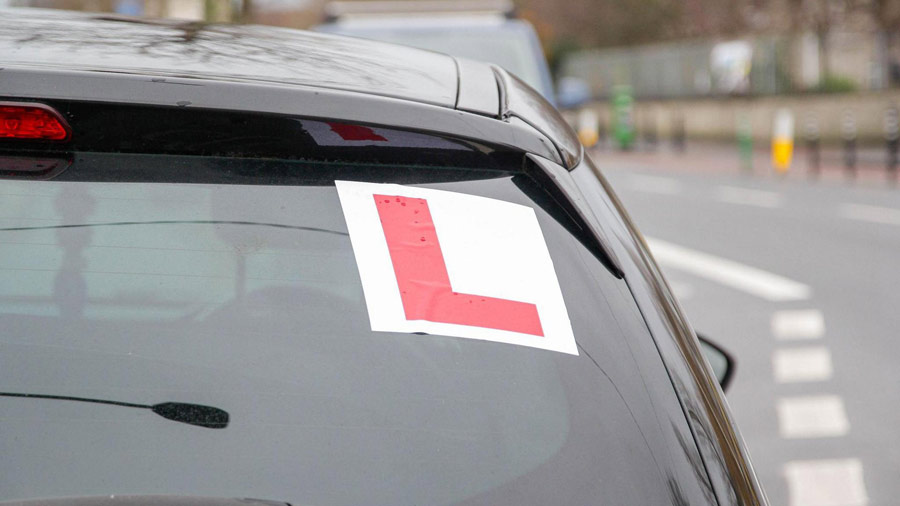The Complete Guide: What to Bring to Your Driving Test in Ireland 2025 Checklist
Wondering what to bring to your driving test in Ireland 2025? Before attending your driving test, you must submit an application and pay the required fee to secure your appointment. You need a valid learner permit, your booking invitation, an acceptable ID, and a roadworthy car with L plates, insurance, and tax. For a comprehensive guide, refer to the “what to bring to your driving test in Ireland 2025 checklist.” Let’s explore each requirement in detail.
Key Takeaways
- Candidates must bring essential documents including a valid learner permit, booking invitation, and appropriate identification to avoid disqualification from the driving test.
- The vehicle used for the test must meet specific requirements, including roadworthiness, valid insurance, proper display of L plates, and current motor tax.
- Preparation for the test day, including arriving early, dressing appropriately, and understanding the test process, significantly impacts performance and anxiety levels.
- Book appointments for your driving test promptly and use the online system to manage, reschedule, or check wait times for your appointments.
Essential Documents for Your Driving Test
Before taking your driving test, make sure you have all the necessary documents. These documents not only verify your eligibility but are also mandatory for taking the test. You need to bring a valid learner permit and a booking invitation.
Having your paperwork organised will save you from last-minute stress and potential disqualification. Here’s a closer look at each essential document you need on the day of your test.
Learner Permit
Your learner permit is your proof of eligibility for the driving test. This driving licence must be current and valid, showing that you have been learning to drive under the rules of the road.
You must have held your learner permit for at least six months before applying for your driving test, allowing time to gain practical experience over the years. Additionally, completing the Essential Driver Training (EDT) is a prerequisite for new drivers.
Double-check that your learner permit is valid and clearly shows your driver number before heading to the test centre. Your learner permit also serves as valid ID, making it indispensable for test day.
Booking Invitation
Your booking invitation confirms your test appointment. You won’t be allowed to take the test without this document. Once you apply for your driving test, you will receive an email invitation to book your test appointment, which is valid for 10 days.
Print out this invitation and bring it to the test centre. This document verifies your appointment and ensures the test centre is prepared for your arrival.
Identification Requirements
In addition to your learner permit and booking invitation, you must present an acceptable form of identification. This can be either a valid passport or a national ID card. Proper identification is essential to verify your identity and ensure that all your documents match up. Without the correct ID, you won’t be able to proceed with your test.
Vehicle Requirements
Your vehicle holds equal importance to your documents for the driving test. Both are essential for a successful assessment. The car you use must meet specific standards set by the Road Safety Authority (RSA). Making sure your vehicle meets standards helps you pass the test and ensures safety for everyone on the road. Key requirements include:
- Roadworthiness
- Proper display of L plates
- Valid insurance disc
- Valid tax disc
Vehicle requirements may differ depending on the categories of vehicles being tested, such as cars, trucks, or motorcycles. Each category may have its own specific standards and technical checks.
Let’s break down the key requirements your vehicle must meet to be eligible for the vehicle category test.
Roadworthiness
Before the driving test begins, your vehicle will undergo a series of safety checks performed by the examiner. These checks include assessing:
- the condition of the tires
- the lights
- the brakes
If your vehicle fails to meet the required safety standards, you may be disqualified from taking the test.
L Plates
L plates are a visible indication that you are a learner driver and must be displayed prominently on both the front and rear of your vehicle. These plates are required by law during the learner stage and must be in place during your driving test.
Properly displaying L plates can significantly impact your test outcome.
Insurance and Tax
Valid insurance and motor tax are non-negotiable requirements for the vehicle used in your driving test. Your vehicle must have up-to-date insurance coverage and display a current motor tax disc. The examiner will check these documents before the test begins to ensure compliance.
Keeping these documents in order fulfills legal requirements and ensures you’re prepared for any situation on the road.
Preparing for the Day of Your Test
Preparing adequately for your driving test day can reduce anxiety and improve performance. Important steps include:
- Arriving at the test centre early
- Dressing appropriately
- Considering the presence of an Approved Driving Instructor (ADI)
Before attending your practical driving test, make sure you have passed the theory test and have all necessary identification ready.
Arriving at the Test Centre
It’s highly recommended to arrive at the test centre at least 30 minutes before your scheduled test time. This allows you ample time to gather your documents, settle any last-minute nerves, and ensure that everything is in order.
Arriving early allows you to observe the test centre’s operations, helping you feel more comfortable and prepared.
Dress Code and Conduct
Wearing smart-casual attire can create a positive impression on the examiner and boost your confidence. Comfortable clothing that allows for ease of movement is advisable for better performance during the test.
Remember, first impressions matter, and presenting yourself well as a person can set a positive tone for the test.
Bringing an Approved Driving Instructor (ADI)
Your ADI’s presence during the test can provide emotional support and reassurance, enhancing your performance. Their presence can help calm your nerves and offer moral support, making you feel more confident and focused.
Discuss this option with your ADI beforehand to see if it’s feasible.
Understanding the Test Process
Understanding the driving test process can make the experience less daunting and help you feel more prepared. The driver testing process in Ireland is overseen by the Driver Testing Section of the Road Safety Authority, which manages applications, scheduling, and test administration. The test consists of several stages, including pre-test checks, an on-the-road assessment, and a post-test discussion. Knowing what to expect at each stage can reduce anxiety and help you perform better.
Here’s a breakdown of each test phase to give you a clearer picture of what lies ahead.
Pre-Test Checks
The driving test begins with pre-test checks, where the examiner will ask you to explain and demonstrate a few vehicle checks, such as fluid levels and brake functionality. Being prepared for these checks is crucial as they set the tone for the test.
Inaccurate performance of these checks can impact your confidence and the examiner’s initial impression.
On-the-Road Test
The on-the-road portion of the test assesses your ability to handle various road and traffic conditions and perform specific maneuvers. During this phase, you will be required to demonstrate skills such as parallel parking, emergency stops, and navigating through different traffic situations.
For motorcycle riders, the test may include additional safety checks and the use of communication devices, such as earpieces, as required by the RSA.
This part of the test evaluates your overall driving competence and adherence to road rules.
Post-Test Discussion
After completing the driving test, the examiner will provide immediate feedback on your performance. This post-test discussion includes highlighting your strengths and areas for improvement.
If you pass, you will receive a certificate of competency. After receiving your certificate of competency, you can apply for your full Irish driving licence.
Common Mistakes to Avoid
Avoiding common mistakes is crucial for passing your driving test. Many candidates fail because of errors such as:
- Improper signaling
- Incomplete stops
- Incorrect road positioning
Being aware of these pitfalls can help you avoid them and increase your chances of success.
Let’s explore these common mistakes in detail.
Incomplete Stops
Making complete stops at stop signs and red lights is crucial for road safety and legal compliance. Failing to make a full complete stop can lead to serious consequences, including test failure and potential traffic collisions.
Adhering to stop signs demonstrates competence and significantly increases your chances of passing.
Incorrect Use of Signals
Using indicators correctly is crucial for communicating your intentions to other road users. Here are some important points to remember:
- Improper signaling can confuse other drivers and lead to accidents.
- Use hand signals consistently and at the right times.
- Always signal when changing lanes or making turns.
This practice contributes to smoother traffic flow and demonstrates your driving competence.
Speeding and Road Positioning
Maintaining appropriate speed and correct road positioning is vital for safe driving. Driving too fast or positioning your vehicle incorrectly within lanes can lead to serious safety issues and is often noted by examiners.
Good lane discipline and speed control are crucial for passing your driving test and ensuring road safety.
Additional Tips for Success
Consider these additional tips to maximise your chances of passing the driving test. Practicing in diverse driving conditions and taking mock tests with your driving instructor can enhance your preparedness and confidence.
After passing the test, new drivers are subject to a 2-year probation period, during which certain restrictions apply.
Practice in a Variety of Road Conditions
Practicing in diverse driving environments builds adaptability and confidence behind the wheel. Exposure to different traffic patterns and road conditions helps you develop the skills needed to handle various challenges during the driving test. This practice improves your driving competence and boosts your confidence.
Mock Tests with Your Driving Instructor
Mock tests with your Approved Driving Instructor (ADI) provide a realistic simulation of the driving test environment. These practice tests identify areas needing improvement and boost your confidence for the actual test.
Regular mock tests are a proven strategy to enhance your chances of passing.
Staying Calm and Focused
Staying calm and focused during the driving test is crucial for optimal performance. To help reduce anxiety and perform at your best:
- Engage in deep breathing exercises.
- Visualise a successful test experience.
- Remember that it’s normal to feel nervous.
- Focus on your preparation.
- Stay positive.
Summary
In summary, thorough preparation is the key to passing your driving test in Ireland. From ensuring you have all the necessary documents to preparing your vehicle and understanding the test process, each step plays a crucial role in your success. Avoiding common mistakes and following additional tips can significantly enhance your chances of passing. Remember, the road to obtaining your full driving licence is a journey, and with the right preparation, you can navigate it successfully. Good luck!
Frequently Asked Questions
What documents do I need to bring to my driving test in Ireland?
To take your driving test in Ireland, you must bring a valid learner permit, a booking invitation, and an acceptable form of identification, such as a passport or national ID card. Ensure you have these documents prepared to facilitate a smooth testing process.
How early should I arrive at the test centre for my driving test?
It is advisable to arrive at the test centre at least 30 minutes before your scheduled driving test to ensure ample time for check-in and to reduce any pre-test anxiety.
Can my driving instructor be present during the test?
Yes, your Approved Driving Instructor can be present during the test, which can provide emotional support and improve your performance.
What vehicle requirements must be met for the driving test?
The vehicle for the driving test must meet RSA safety standards, display L plates, and possess valid insurance and motor tax. Ensuring these requirements are met is essential for a successful test.
What are some common mistakes to avoid during the driving test?
To ensure success during your driving test, avoid common mistakes such as failing to make complete stops, not using signals correctly, and maintaining improper speed and road positioning. Attention to these details can significantly enhance your performance.








